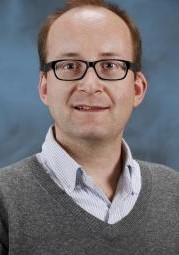Kalinin’s Atomic-Scale Building Research Featured in Physics Today
Can you build and probe quantum structures from the bottom up, one atom at a time?

That’s the question asked by scientists the world over whose research involves ever-more powerful, increasingly high resolution microscopes.
Nanoscale—a scale so small that a human hair is several tens of thousands of nanometers thick—has long been the forefront of microscopy. Now, a new, even more refined level is taking shape, with the help of a team led by UT Department of Materials Science and Engineering (MSE) Research Professor Sergei Kalinin: from the lab on a beam to the fab on a beam.
“We can now see, and to some extent understand, materials on the atomic level thanks to tools available at UT and Oak Ridge National Laboratory,” said Kalinin. “However, the next challenge is to move from looking at things to making things on the same scale, i.e., atom by atom. Can we control chemistry by electron microscope?”
In the last few decades, the field has advanced scanning transmission electron microscopy (STEM) to a place where it can be used to identify properties instead of merely taking an image of structures and atomic arrangements. In the same time frame, aberration correctors were developed that helped make microscopy more precise than ever before.
Along with researchers Stephen Jesse and Andrew Lupini at ORNL’s user facility, the Center for Nanophase Materials Sciences, Kalinin has taken the next step, developing what the team calls “a lab in a beam.”
That concept envisions a device that can both scan materials and also manipulate their makeup by moving atoms and making and breaking chemical bonds, all at the atomic level.
“Getting to that next step will require us to bring to bear an understanding of several disciplines towards the common goal of being able to control matter atom by atom, making and breaking chemical bonds at will,” said Kalinin. “There are already well known techniques and breakthroughs that could help us achieve our goal, we just need to figure out how to integrate them in such a way that moves our project through the next step.”
Kalinin added that any new areas that they explore and overcome now will, in turn, influence the future direction of fields like atomically precise manufacturing, building quantum computing and sensing devices, and other areas that can only by speculated about now. Combined with the quantum material effort at UT, this positions MSE to be a thought leader in new technologies and material discoveries for the foreseeable future.
As a sign of the importance of the work, Physics Today highlighted it in the publication’s June issue.